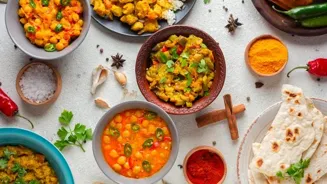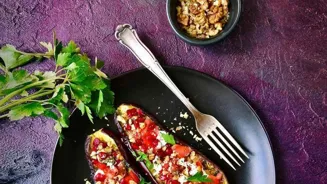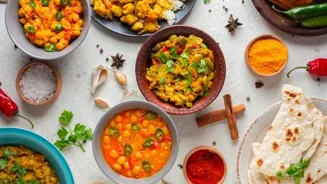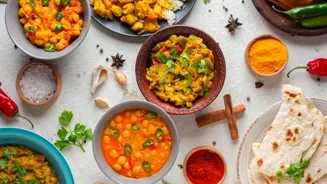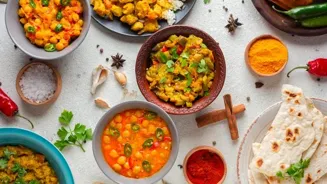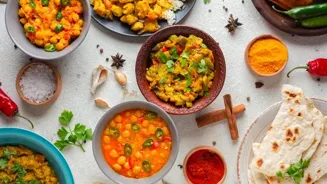Discover the Sweet History of Indian Desserts: Gulab Jamun to Jalebi. Dive into the origins & flavors that define each treat
India is famous for many things, and its sweets are definitely one of them. Every
corner of India has its own special dessert, each with a unique story.
This article takes you on a journey through the tasty history of some of India's most loved sweets, from the syrupy gulab jamun to the crispy jalebi. We will explore how these treats came to be and what makes them so special.
Gulab Jamun: Sweet origins, fusion of Persian & Indian flavors
Gulab Jamun, those soft, melt-in-your-mouth balls of sweetness, have roots that go way back. They are believed to have originated in Persia, brought to India by Central Asian Turkic rulers. The original sweet was a lot like luqmat al-qadi, a fried dough ball soaked in honey syrup.
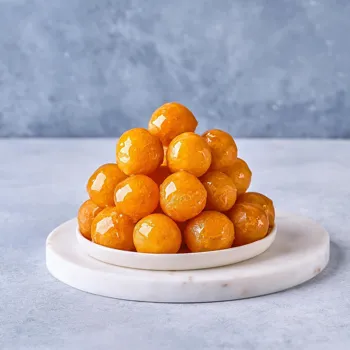
Over time, the recipe changed in India. Locals started using khoya, a milk solid, to make the dough. This gave the gulab jamun its unique texture and taste.
The name itself is a mix of Persian and Hindi: "gulab" means rose (referring to the rosewater-flavored syrup), and "jamun" is a local Indian fruit that looks like the sweet.
Jalebi: a sweet treat with foreign roots, loved in India
Jalebi, with its interesting spiral shape and sugary coating, is another dessert with foreign connections. It is thought to have come from the Middle East, where it is known as "zulabiya" or "zalabia". Traders and travelers brought it to India centuries ago, and it quickly became a favorite.
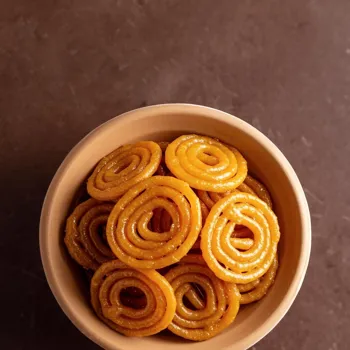
Jalebi is made by deep-frying a fermented batter of maida flour in pretzel or circular shapes, which are then soaked in sugary syrup. It's crispy, tangy, and oh-so-sweet, that is often enjoyed with rabri, curd, or simply on its own. Jalebi holds a special place in Indian festivals and celebrations.
Rasgulla's disputed origin between Odisha and West Bengal, leaning towards Odisha historically
Rasgulla, famous for its spongy texture and syrup-soaked goodness, has a long-standing debate about its origin. While both Odisha and West Bengal claim it as their own, the history points towards Odisha.
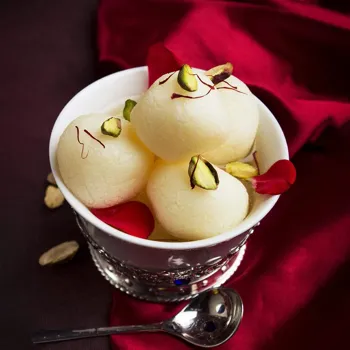
According to historical records, the first rasgulla-like sweet was offered at the Jagannath Temple in Puri, Odisha, centuries ago as part of a ritual. This early version was made from chhena (paneer) and was quite different from the rasgulla we know today.
Later, confectioners in Bengal refined the recipe, creating the soft, white rasgulla that's widely popular. Regardless of its exact origin, rasgulla remains a beloved Indian sweet.
Laddu: A versatile Indian sweet with rich history and diverse styles
Laddu is perhaps one of the most versatile of all Indian sweets. These round balls of delight are made in countless variations using different ingredients like besan (gram flour), motichoor, semolina, and more. Laddus are an integral part of Indian festivals, weddings, and religious ceremonies.
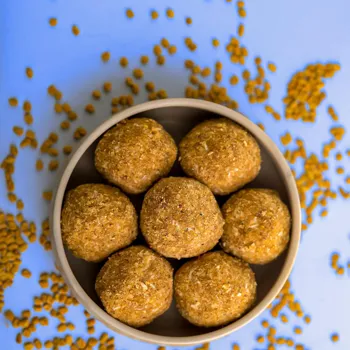
They are often offered as prasad (religious offering) in temples. The history of laddu is ancient, with references to sweet balls made from sesame seeds and jaggery found in ancient texts.
Over time, the recipe evolved, and different regions developed their own unique laddu styles, making it a truly diverse sweet.
Barfi: Classic Indian sweet made with milk, sugar, nuts, and spices
Barfi, with its smooth, milky texture, is a classic Indian sweet that is enjoyed across the country. It's made by condensing milk and adding sugar, along with other ingredients like nuts, cardamom, and saffron.
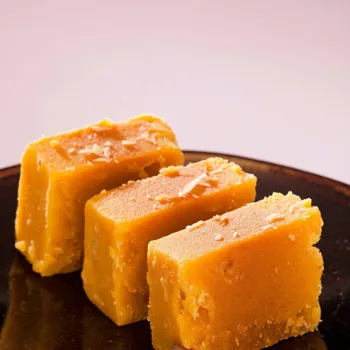
The name "barfi" comes from the Persian word "barf," which means snow, referring to its white color and melt-in-your-mouth texture. Barfi is often prepared during festivals and special occasions.
Similar to laddu, there are many types of barfi made using different ingredients such as besan, kaju (cashew), pista (pistachio), and coconut.
Indian desserts reflect rich cultural heritage in every bite
These are just a few examples of the rich and diverse world of Indian desserts. Each sweet has its own unique story, reflecting the cultural influences and culinary traditions of different regions.
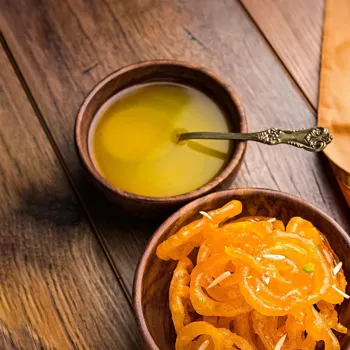
From ancient temple offerings to royal cuisines, these sweets have evolved over centuries, becoming an integral part of Indian identity. So, the next time you enjoy a gulab jamun or a jalebi, take a moment to appreciate their delicious history and the stories they tell about India's sweet heritage.
Every bite is a taste of history!
AI Generated Content. Glance/InMobi shall have no liability for the content